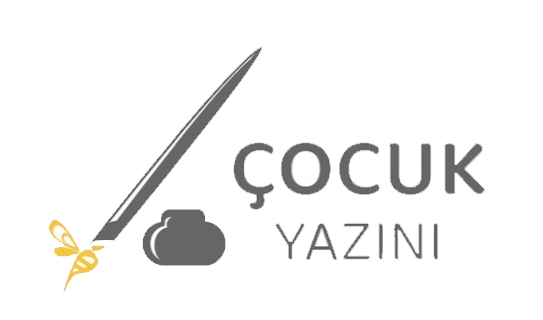It’s a Book is published in 2010 and received the Society of Illustrators Lifetime Achievement Award in 2014. Lane Smith’s book, It’s a Book, is like a manifesto about technology which is now an indispensable part of people’s lives.
It’s a Book is published in 2010 and received the Society of Illustrators Lifetime Achievement Award in 2014. Lane Smith’s book, It’s a Book, is like a manifesto about technology which is now an indispensable part of people’s lives.
It’s a Book begins with an illustration introducing a mouse, a donkey, and a monkey and continues with a dialog started with some questions asked by the donkey who saw the monkey reading. Holding his computer in his hands and seeing the monkey reading a book, the donkey asks him, “what is in your hand?” “A book” the monkey replies him. The donkey, who never met a book before, thinks that a book can do anything that a computer can. However, he is also curious about the computer and asks questions about it: “How do you click?”; “Can you write a blog with that?”; “Where is your mouse?”; “Can you send e-mails; connect to the internet?”; “Does it ask for a password?”; “Do you need a username?” The monkey replies: “Look, it’s a book”.
According to a study done by Ayşegül aksaçlıoğlu and Bülent Yılmaz reading, which is the oldest method of learning, is an individual, creative and mental process. It improves creativeness, talents, thinking abstract, imagination, and mental and motor development of children. Therefore, it is crucial to begin reading in childhood and make it a habit in the early youth. However, after the development of technology has transformed the reading to a gaze-based activity that is being carried out with television, computers, and radios. It’s a Book can be read as an instance showing this transformation, since Technology is at the center of the life of the donkey that does not know even what a book is. The narrator introduces the book to the child reader through the donkey as the main character.
On the other hand, introducing the book to the reader reminds the theory of social learning, which is employed mostly in the discipline of educational sciences and psychology. What is fundamental for the theory of social learning is that learning is realized by observing the others, and it is based on the idea of learning within and for the sake of society (Bayrakçı, 199). Accordingly, a person learns his/her behaviours by observing and modelling other’s actions. There are three kinds of modelling; the first one is the “alive model” meaning that there is a model person acting in a certain way. The second one is the “symbolic model” which depends on the existence of a person or a character described in a book, television, show or anywhere else (Bayrakçı, 203). It is possible to determine these two kinds of modelling in Lane Smith’s book, It’s a Book. The monkey’s reading a book and the donkey’s observing him at the same time as well as their communication make the monkey a model for the donkey. On the other hand, explaining to the reader what is a book and acquiring the reading habit, the two character has a symbolic model for the child reader.
Another striking point in It’s a Book is that the narrator stands in a position to discredit technology. The narrator accepts the existence of technology but underlines that there is a reality called as “book” besides it. It is a fact that technology (video games, television, smartphone, tablet etc.) has negative implications for children. At the same time, if the technology is based on the benefit, it contributes to the development of them. Indeed, as Prof. Yaprak İşçibaşı states positive implications, the computer offers an entertaining and informative atmosphere for children as well as promotes them to be an individual by turning them independent decision-makers. Moreover, İşçibaşı puts, it measures the level of success, and in the case of failure, allows to practice and repeat the topics which they did not understand well many times (İşçibaşı, 127).
Lane Smith’s awarded book is a successful illustration example for a generation for whom it impossible to imagine any moment without technology. Its online trailer increases children’s willingness to read a book.[1] At this point, the writer’s attitude in publishing and delivering the book with technology would show the consistency between what she advises and what she does in the real world: She confirms technology instead of discrediting it. The donkey will love reading as much as he loves the computer; we realize this detail with the visual illustrating that the donkey reads a book for hours after meeting it. On the other side, the donkey experiences “the book” through the monkey and the reader does the same through the representation of both the monkey and the donkey as models. This situation exemplifies the model of the social learning theory.
Bibliography
Aksaçlıoğlu, Ayşegül ve Bülent Yılmaz. Öğrencilerin Televizyon İzlemeleri ve Bilgisayar Kullanmalarının Okuma
Alışkanlıkları Üzerine Etkisi. Hakemli Yazılar, Türk Kütüphaneciliği 21, 1 2007. 3-28.
Bayrakçı, Mustafa. Sosyal Öğrenme Kuramı ve Eğitimde Kullanımlası. SAÜ Eğitim Fakültesi Dergisi, 14, 2007,
198-210.
İşçibaşı, Yaprak. Bilgisayar, İnternet ve Video Oyunları Arasında Çocuklar. Selçuklu İletişim, 7/1, 2011. 122-
130.
Smith, Lane. It’s a Book: Bu Bir Kitap. Çev. Tuğçe Akyüz. Ankara: Uçanbalık Yayınları, 2015.
[1] You can click here to watch the trailer: https://www.youtube.com/watch?v=x4BK_2VULCU

